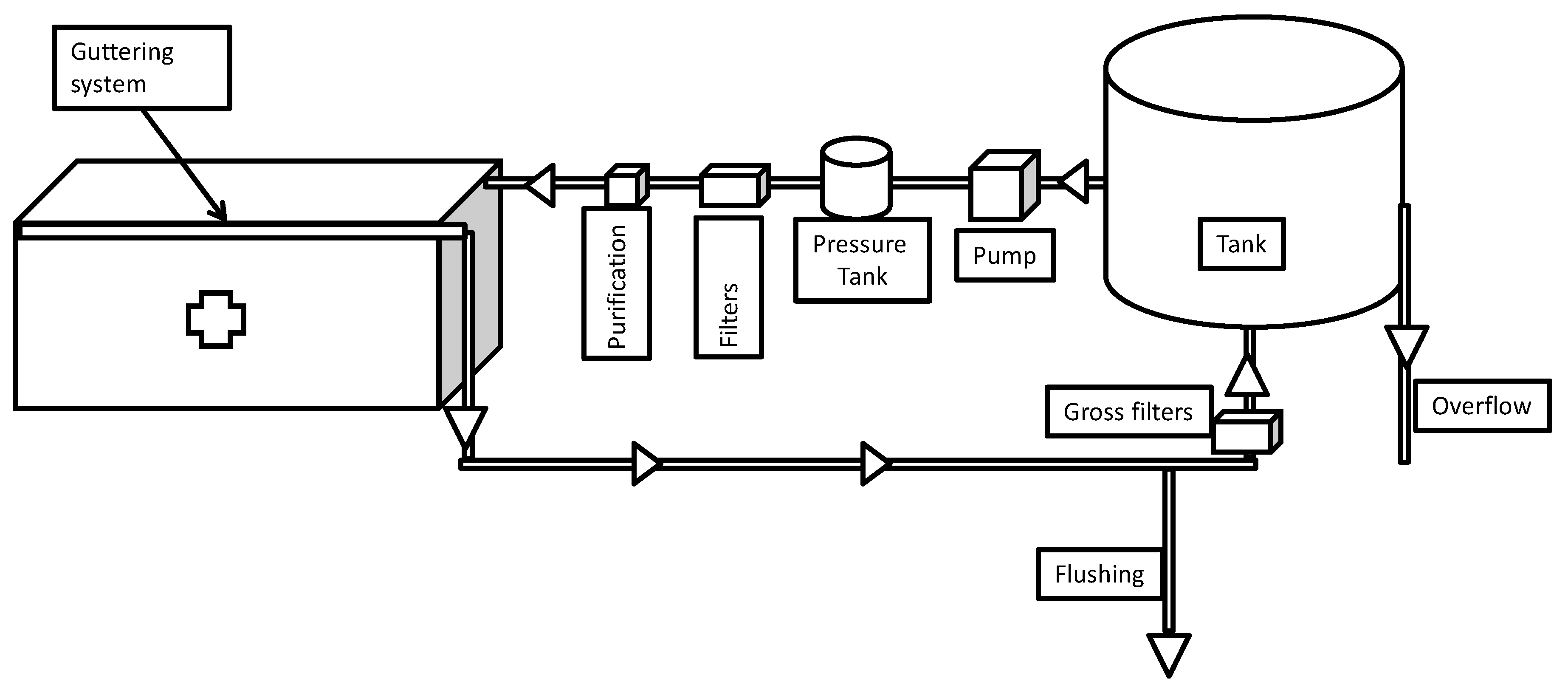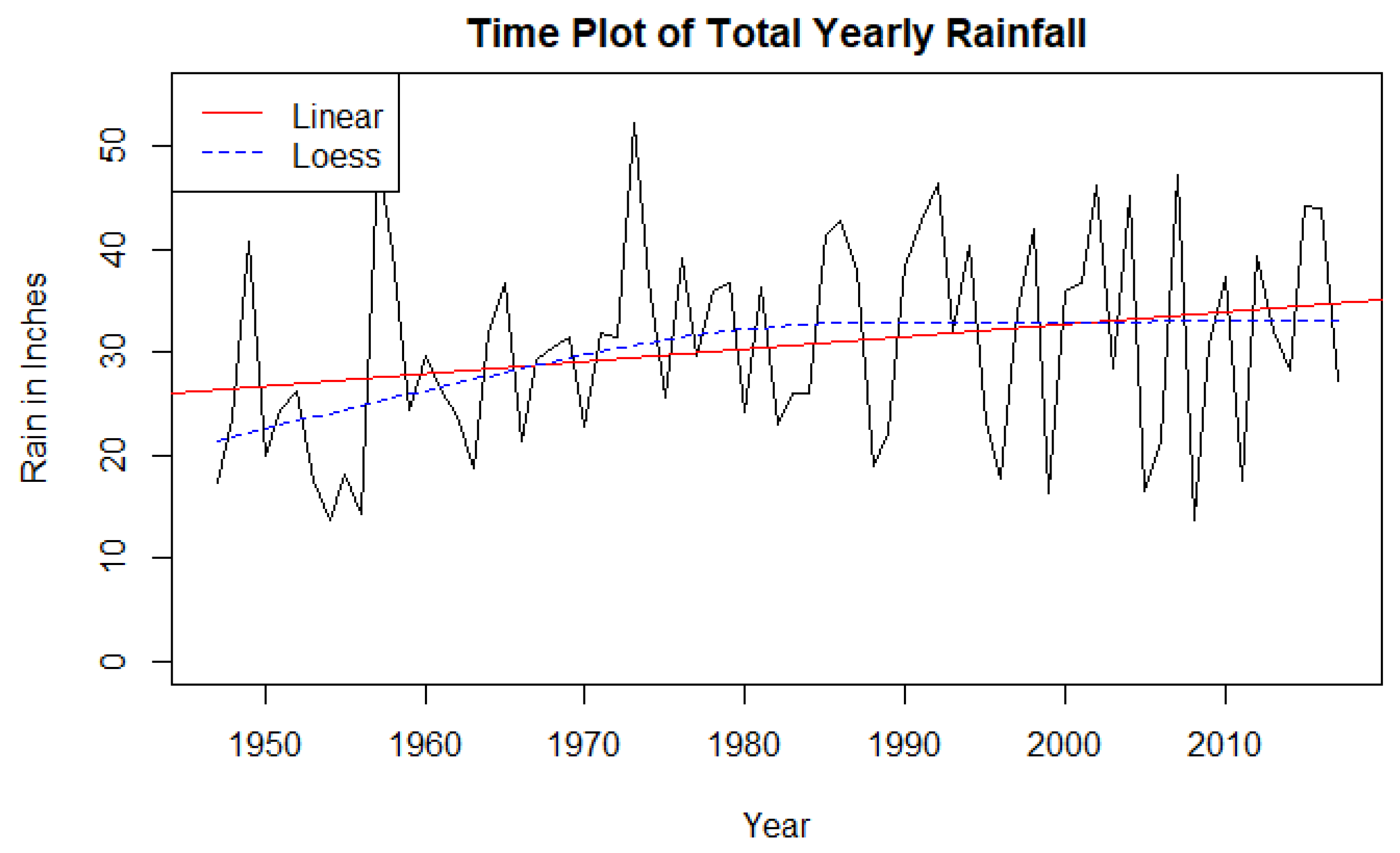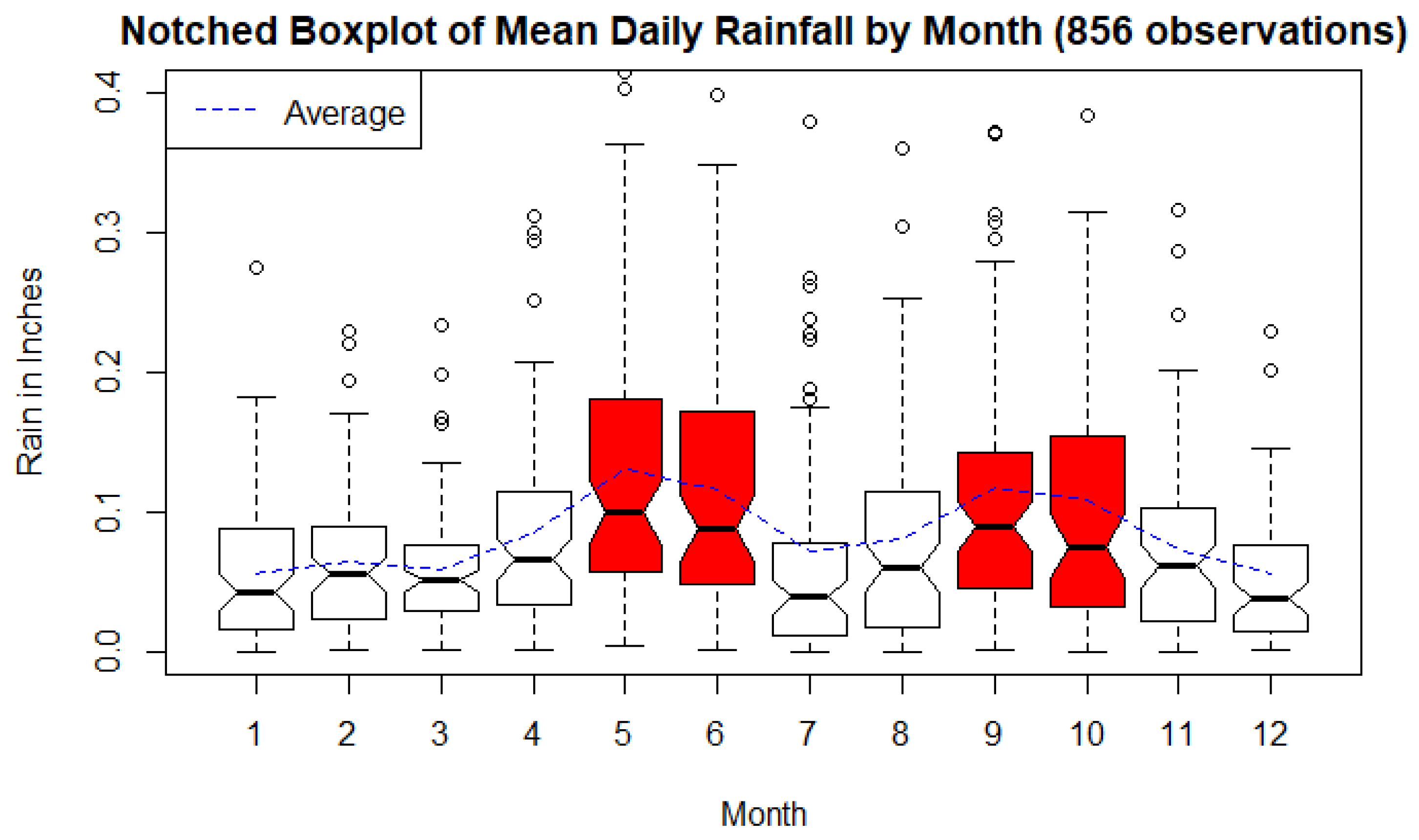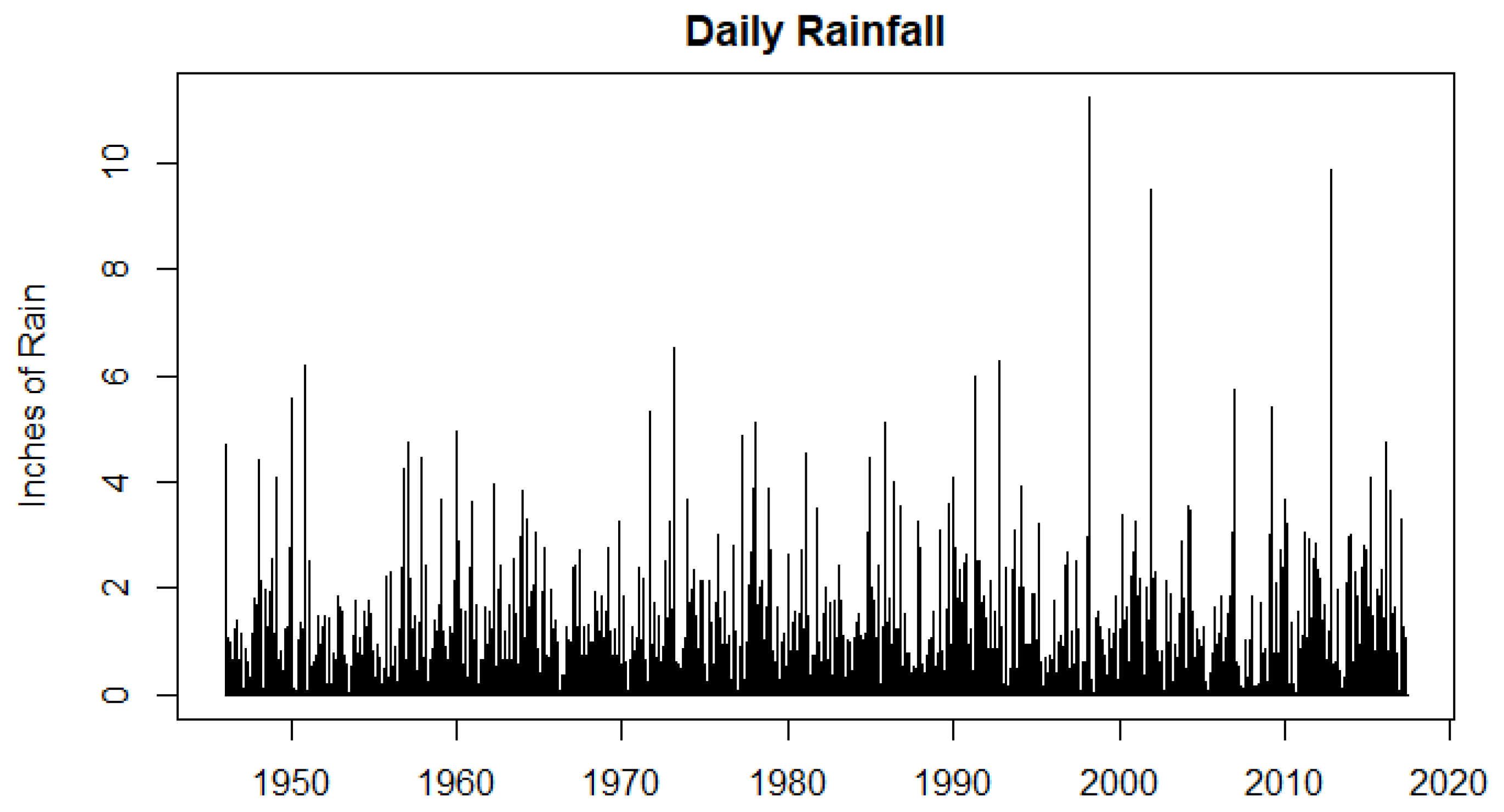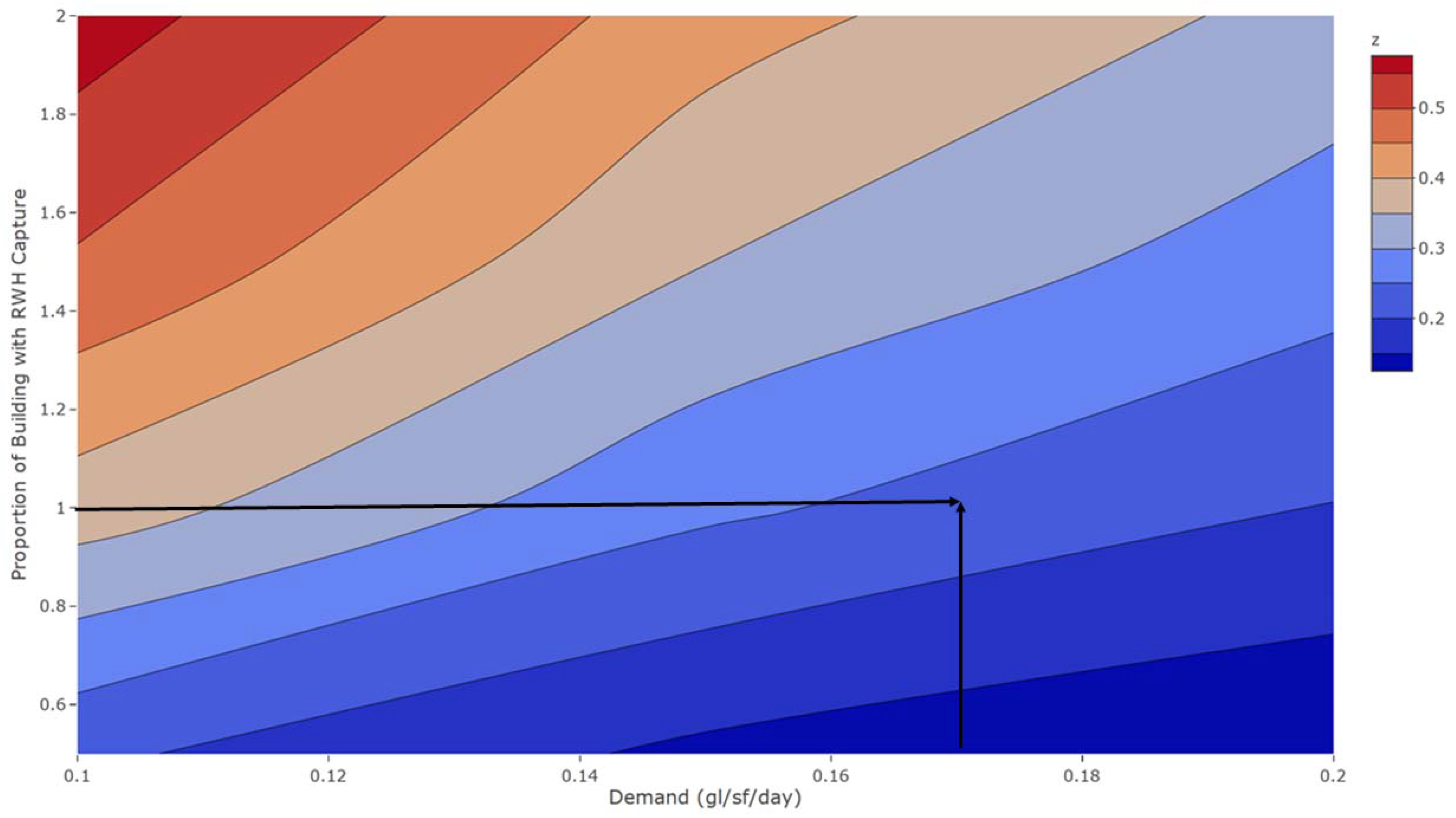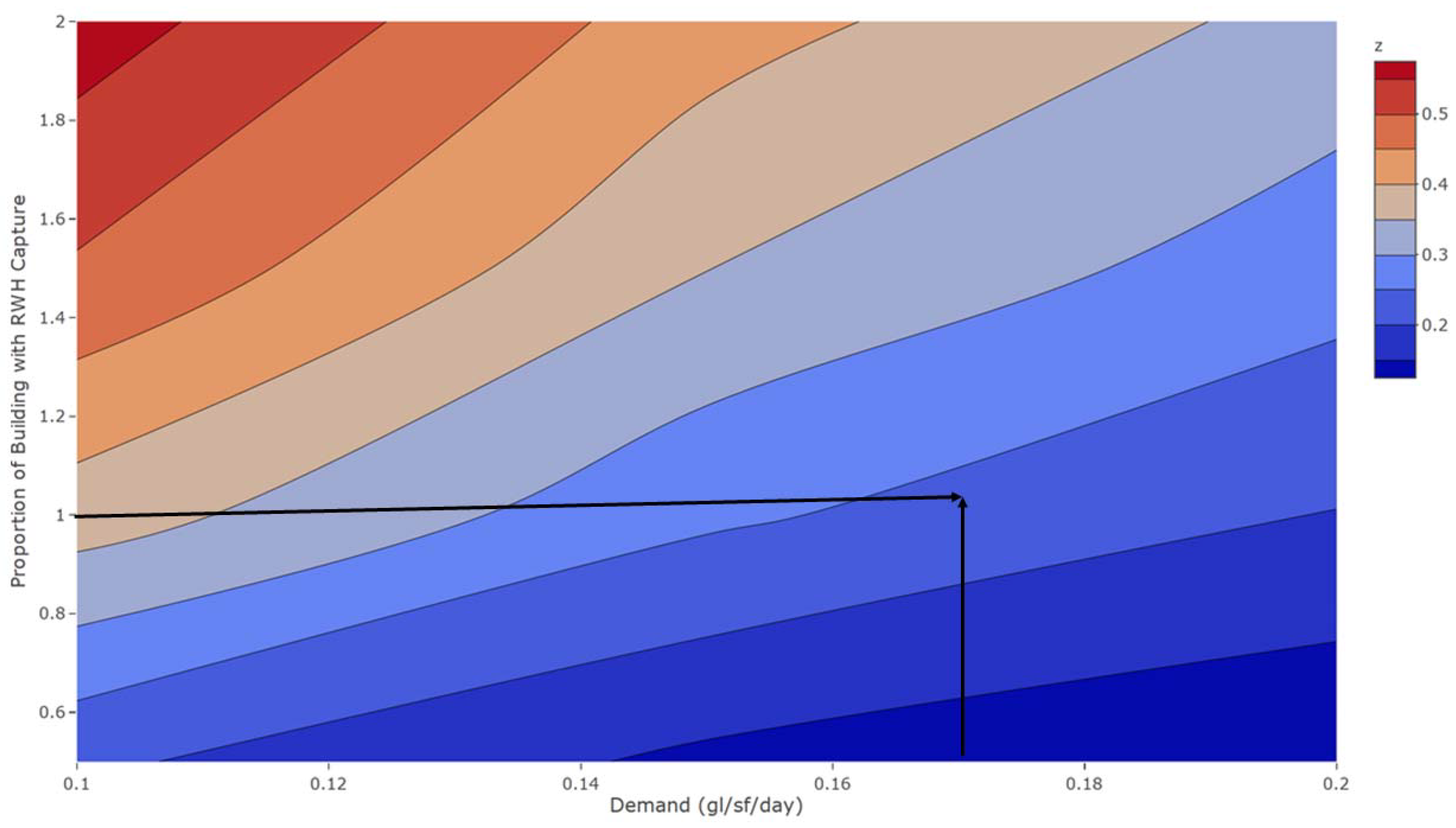2.4. Simulation: Parameters, Variables, & Flowchart
The simulation begins with the initialization of Design of Experiments (DOE) parameters (
Supplementary material—“DOE”). For clarity, variables will be italicized, but parameters will be in regular type. Building size, tank holding capacity, roof capture area, and demand are important characteristics to evaluate when considering RWH systems [
7,
15].
Table 1 provides the operational definition of these parameters along with the source and values investigated.
The building size (BUILD) parameter is necessary to estimate the total daily demand of a hospital facility. For this simulation, some proportion of available square footage is used by a facility for capture of rainfall. Six specific building sizes are investigated ranging uniformly between 200,000 and 1.2 million square feet. The ROOF parameter (discussed below) makes that conversion.
The mean daily water demand (DEMAND) parameter is based on the building size. The
Commercial Building Energy Consumption Survey (CBECS) from the US Energy Information Administration reports an average of 0.19 gallons per square foot per day are consumed by larger facilities [
1]; however, we investigate the effect of demand reductions over a wide range. Just the addition of low-flow plumbing may reduce hospital consumption as much as 30% [
23]. With xeriscaping and the addition of low-flow devices, it is not unreasonable to expect a 50% reduction in water consumption.
The capture area (ROOF) is based on the building size as well and is defined as the percentage of the building area (BUILD) actually used for rainwater harvesting. The capture area (ROOF) may include large, enclosed garages, outbuildings, and any area which has an appropriate roof structure and surface (either when built or after construction) that is not estimated as part of the hospital’s building space, so values above 100% are feasible, particularly if the hospital is designed in advance with rainwater harvesting in mind. Further, free-standing collection areas might also be incorporated. It is impossible to translate building square footage into capture square footage, which is why various values of ROOF capture proportions are investigated, {50%, 100%, 150%, 200%}.
The holding tank capacity (CAP) for large hospitals may include water-tower like structures, as installed in the Miami Veteran’s Hospital [
24], or multiple smaller above or below-ground cisterns. The capacity of this tank is an engineering consideration that must be planned during the design/re-design phase. For this simulation, the values of {500 K gallons, 1 M gallons, 1.5 M gallons, and 2 M gallons} are investigated.
For the simulation models, the balance equation details the primary variables of interest. This model is shown as Equation (1).
Here,
Vt is the volume in the tank at time
t measured in gallons.
C is the “capture” or rainfall supply while
D is the associated demand.
O is the overflow. The volume at time
t must be positive, semi-definite and is restricted as such by using the maximum operator. Not shown here is that capture of water is imperfect.
The Texas Manual on Rainwater Harvesting [
3] suggests that capture efficiency (which is identified as
E) is somewhere between 0.75 and 0.90. The simulation therefore uses a uniform distribution to model Equation (2), where
St is the rainfall supply at time
t. Inserting Equation (2) into Equation (1) results in a modified balance equation shown in Equation (3).
The daily rainfall in inches,
St, is based on 71-years of daily NOAA data. In the historical runs (
Supplementary material—“historical run”), the simulation assumes that the past rainfall data will be representative of the future. Because of potential non-stationarity (i.e., trending) and volatility of daily rainfall possibly due to changes in climatology, using a fixed, historical data stream might not represent what is achievable when adopting rainwater harvesting systems. For this reason, simulation from time series models were also investigated to model
S. These time series simulations will be discussed later.
Mean values for the water demanded variable,
D, derived from CBECS [
1] based on average demand per square foot (DEMAND) multiplied by the total hospital square footage (BUILD). CBECS reported standard errors associated with these estimates, and these were used as part of a stochastic process. The water demanded (
D) was then assumed to be from a Poisson process and modeled as an exponential distribution with a mean of 1/(DEMAND × BUILD). Because of the daily variability of demand and its strict truncation at zero, the exponential was a reasonable choice.
Equation (4) details all stochastic and deterministic elements associated with the simulation.
Table 2 provides a complete list of variables and the associated explanations.
Figure 2 depicts the variables and parameters for each iteration of the simulation model in a flowchart.
An important statistic for this simulation model was the proportion of external water demand offset that a specific design would have. Thus, the number of simulation iterations was set to ensure that the volume in the tank estimate was bracketed within 5000 gallons (margin of error, MOE), which represents 1% of the smallest tank size, a small error. The maximum standard error for volume (
V) across all DOE scenarios was 4148 gl after a 25,915-day (71-years) run (excludes 29 February). Using this standard deviation, the MOE of 5000 gallons and α = 0.05, the estimate for the number of runs was calculated to be 3 as shown in Equation (5), where
Z is the value for the standard normal distribution at the specified
α.
With 6 building sizes (BUILD), 4 capture proportions (ROOF), 4 holding tank capacities (CAP), 3 demand parameters (DEMAND), 365 days per year, 71 years, and 3 iterations (sequence i), the total number of individual daily observations was 6 × 42 × 3 × 365 × 71 × 3 = 22,390,560 observations per rainfall generator.
